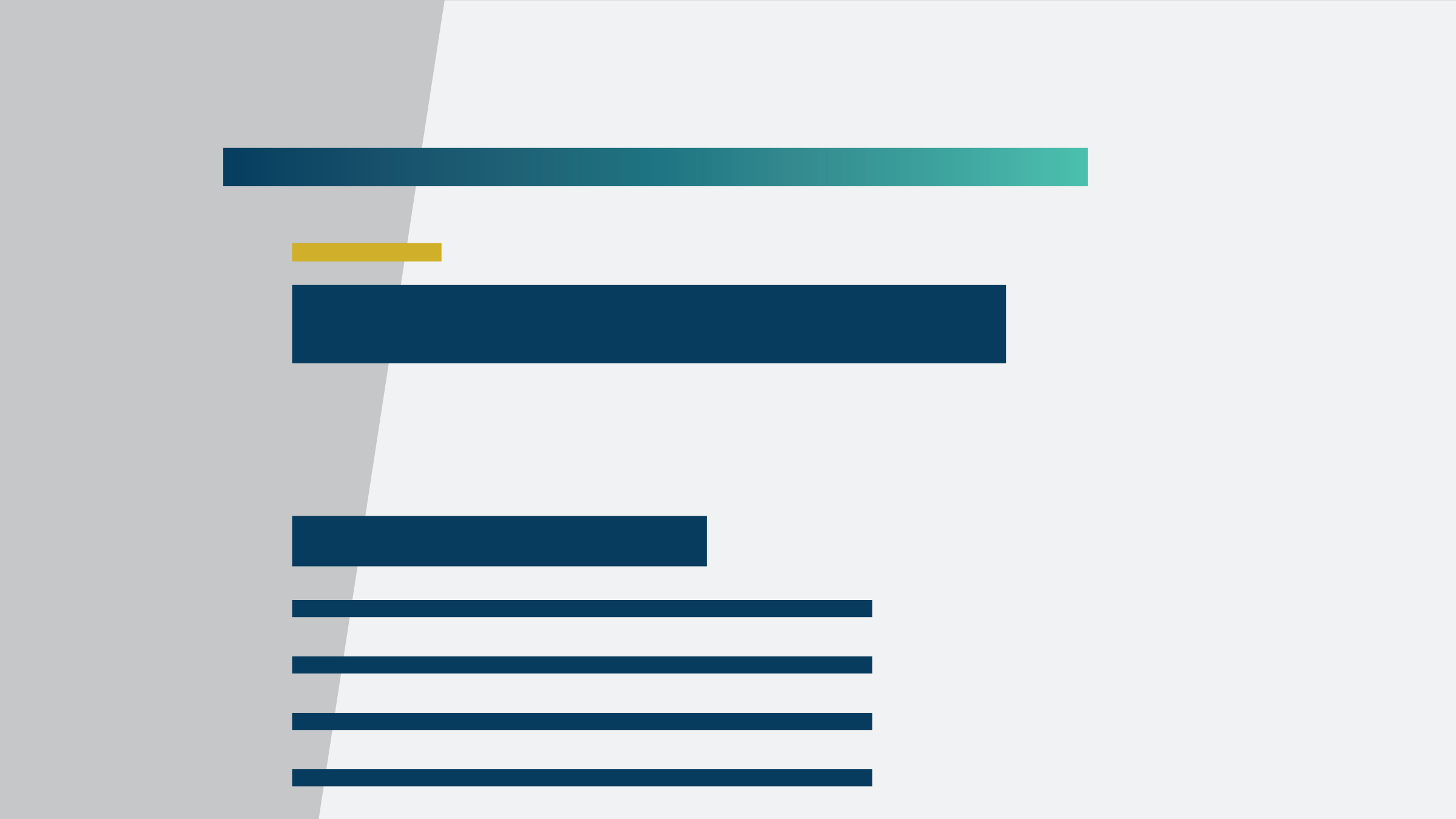The labor market has strengthened significantly in recent years. More workers ages 25 to 54 are participating in the labor market, with that increase driven disproportionately by women. However, these trends can conceal how people with differing demographic characteristics experience the labor market and how employment inequality has evolved over time for men and women.
In an analysis based on a new methodology that more fully uses available demographic information, we find that for both men and women, the likelihoods of being employed have recently converged. That is, men and women with the lowest likelihoods of employment—who are disproportionately from low-income families—have gained ground on their counterparts with higher likelihoods of employment.
Large employment gaps are gradually diminishing
Employment inequality—that is, differences in employment rates between those most likely and least likely to have a job—speaks to the availability of jobs and inclusiveness of economic growth. The typical approach to assessing these differences is to separate people into groups by a single variable—for example, education—and estimate each group’s employment rate. While straightforward, this approach is imprecise if the goal is to fully understand employment disparities, including those within each education group.
For our analysis, rather than look at one variable at a time, we simultaneously considered a rich set of individual-level characteristics like age, race/ethnicity, presence of children, and foreign-born status. Starting in a base period, we used machine learning to predict employment on the basis of all of those characteristics. We then divided individuals into five groups, or quintiles, ordered from lowest predicted employment rate to highest. We conducted these analyses entirely separately for men and women, such that roughly one-fifth of men are in each of their quintiles and one-fifth of women are in each of their quintiles. The method we use is described in more detail in our earlier paper, The Evolution of Employment Dispersion.
Figure 1 shows the average employment rate within each quintile, separately for women and men. Here and throughout this article, we restrict our analysis to individuals ages 25 to 54. The levels of employment are quite different across groups. In 2023, 88 percent of the top quintile of women were employed, while 58 percent of the bottom quintile were employed. For men, the shares of those employed in 2023 ranged from 72 to 96 percent across quintiles. Though not the main focus of our analysis, it is also notable that average employment rates for men are uniformly higher than for their women counterparts in each quintile.
While persistent, employment rate gaps across quintiles can change quite a bit over time. For both men and women, individuals with lower predicted employment (who tend to be low- and middle-income workers) experienced the largest employment increases in recent years. Figures 2 and 3 zoom in on the changes by indexing each group to zero in March 2015, then tracing out the increase or decrease relative to their own levels in 2015, for men and women respectively. The lowest quintiles saw the biggest increases in employment from 2015 to early 2020, while the highest quintiles experienced much smaller increases. Those shifts did not erase the gaps featured in Figure 1, but they did reduce them.
The COVID-19 pandemic featured a different pattern. The lowest quintile had the sharpest decline in employment in 2020, which was soon offset in the subsequent recovery. All told, employment inequality fell from 2015 to 2023—employment in the lowest quintile grew more than employment in the highest quintile. In other words, the likelihoods of being employed have converged for both men and women.
Who tends to have the lowest likelihood of employment?
When we examine how the demographic characteristics included in our analysis—such as education level and race/ethnicity—correspond with the quintiles of predicted employment, we see some relationships that are expected. For example, Figure 4 shows that for both men and women, more education is tightly related to higher predicted likelihood of work. Of those in the top quintile of predicted employment for men, 88 percent have college degrees. But other variables shown in the figure are also useful for predicting likelihood of work. For example, consider the lowest quintile of predicted employment for women. The presence of children is a key factor—women in this group have, on average, 0.41 children under the age of five. Foreign-born status and Latina ethnicity are also important, with a slight majority having been born abroad and 41 percent being Latina.
| Quintile | Low income | B.A. degree | White | Black | Latino | Number of children under five |
Born in U.S. |
|---|---|---|---|---|---|---|---|
| 1 (Lowest) | 67% | 16% | 22% | 20% | 41% | 0.41 | 47% |
| 2 | 56% | 11% | 59% | 8% | 23% | 0.22 | 73% |
| 3 | 40% | 35% | 35% | 20% | 26% | 0.27 | 75% |
| 4 | 33% | 57% | 70% | 9% | 11% | 0.24 | 89% |
| 5 (Highest) |
24% | 100% | 85% | 10% | 2% | 0.00 | 99% |
| Quintile | Low income | B.A. degree | White | Black | Latino | Number of children under five |
Born in U.S. |
|---|---|---|---|---|---|---|---|
| 1 (Lowest) | 66% | 0% | 51% | 25% | 18% | 0.06 | 94% |
| 2 | 50% | 28% | 41% | 17% | 29% | 0.02 | 75% |
| 3 | 43% | 40% | 61% | 7% | 25% | 0.12 | 73% |
| 4 | 36% | 36% | 51% | 7% | 29% | 0.31 | 61% |
| 5 (Highest) | 13% | 88% | 78% | 5% | 7% | 0.47 | 84% |
Sometimes these variables can interact with each other differently across gender. For example, the highest-employment group consists disproportionately of White men and women. However, Black women are more evenly distributed, whereas Black men tend to be concentrated in lower quintiles of predicted employment. Conversely, Latinas are more concentrated in lower quintiles while Latino men are distributed more evenly across the quintiles.
The connection between predicted employment and whether a worker is foreign-born differs between men and women as well. Women with low predicted employment are disproportionately likely to have been born abroad, whereas men with the lowest predicted employment are more likely to be native-born than men with higher predicted employment.
Family income was not among the variables we used to predict employment.* However, it is helpful to track, for each of the quintiles, how many individuals are in low-income families and how this varies by gender. Low- and middle-income workers tend to be concentrated in the lower quintiles of predicted employment. As Figure 4 shows, two-thirds of individuals with the lowest predicted employment have family incomes below $75,000 (denoted as Low income in the figure), by contrast to only one-quarter of individuals in the highest quintile.
Employment inequality tends to be lower when unemployment is low
As discussed earlier, employment gaps widened during the pandemic recession and fell during the subsequent recovery. But does this pattern hold true for earlier business cycles? Figures 5 and 6 show how the gap between the top and bottom groups of men and women varies with the unemployment rate, using the methodology outlined in our earlier paper. Figure 5 shows that employment inequality rose with the unemployment rate in the 1980s and 1990s for women. Since the 2000s, it appears that the relationship between inequality and economic conditions has weakened for women—particularly during the long recovery from the Great Recession.
By contrast, the same exercise for men in Figure 6 shows a tight relationship between inequality and unemployment across the entire period examined, including the most recent business cycles. For example, consider the post-Great Recession period (2008–2019) in Figure 6, shown in teal: when unemployment is higher, employment inequality is also higher for men. In other words, the gap between men who tend to have lower employment and men who tend to have higher employment is larger when labor markets are slack. Conversely, when unemployment falls, inequality is typically lower.
Going beyond the surface of men’s and women’s employment
The differing patterns for men and women raise interesting questions. Underlying the patterns of Figures 5 and 6 could be several factors, including differing mixes of men and women in different sectors of the labor market, joint decisions within households about who will join the labor force, or gender gaps in educational attainment. For example, during the Great Recession the male-dominated industries of construction and manufacturing were particularly hard hit as unemployment rates spiked. We do not attempt to disentangle these factors here, but nonetheless stress the importance of measuring employment inequality and understanding the unique experiences of those with lower likelihoods of employment.
An accurate assessment of employment inequality is crucial for understanding the labor market and how well it is functioning for individuals across the distribution, especially for those with lower likelihoods of employment. It also helps us identify more precisely which groups of men and women are least likely to be employed. Together with analysis of wage inequality, this assessment illuminates the larger labor market picture for workers at the margins. This information can help policymakers, researchers, and others better grasp how well the economy is working for low- and moderate-income workers and design more appropriate interventions.
The authors thank Brad Hershbein for insightful feedback on an earlier draft.
Endnote
* Because employment directly generates family income, it would not be an appropriate predictor.
Ayushi Narayan conducts research on labor market institutions to help the Community Development and Engagement team understand how employment-related policies and trends affect low- and moderate-income communities. Prior to joining the Bank, her work included roles at the Council of Economic Advisers, Nike, and Amazon.







